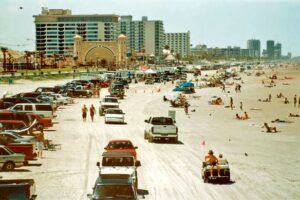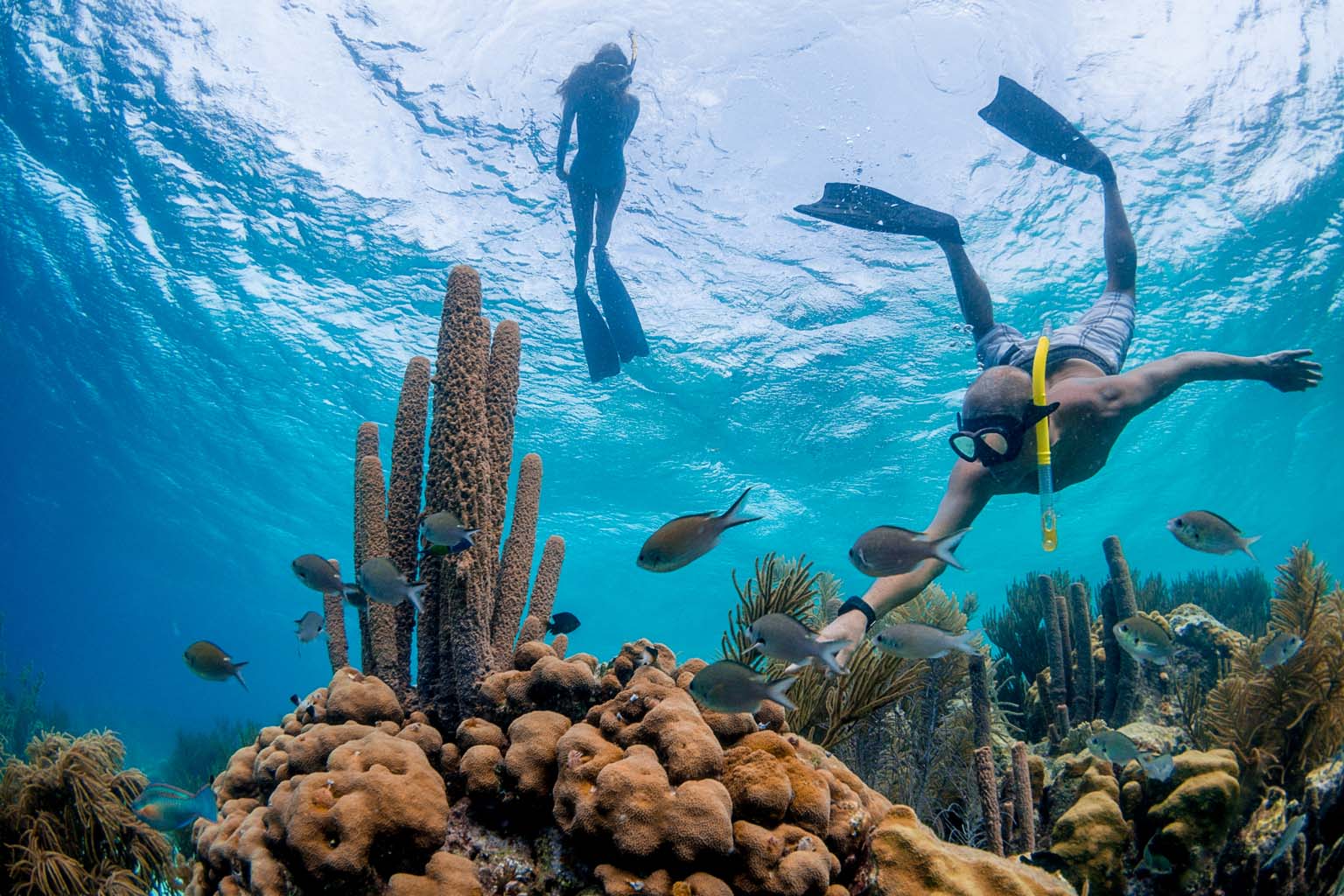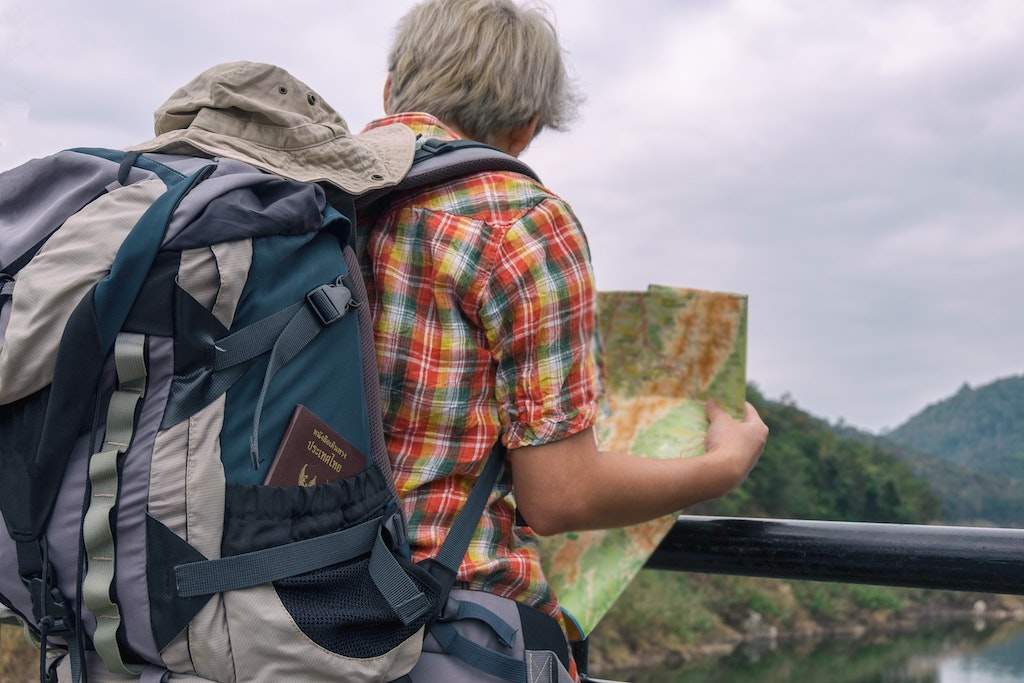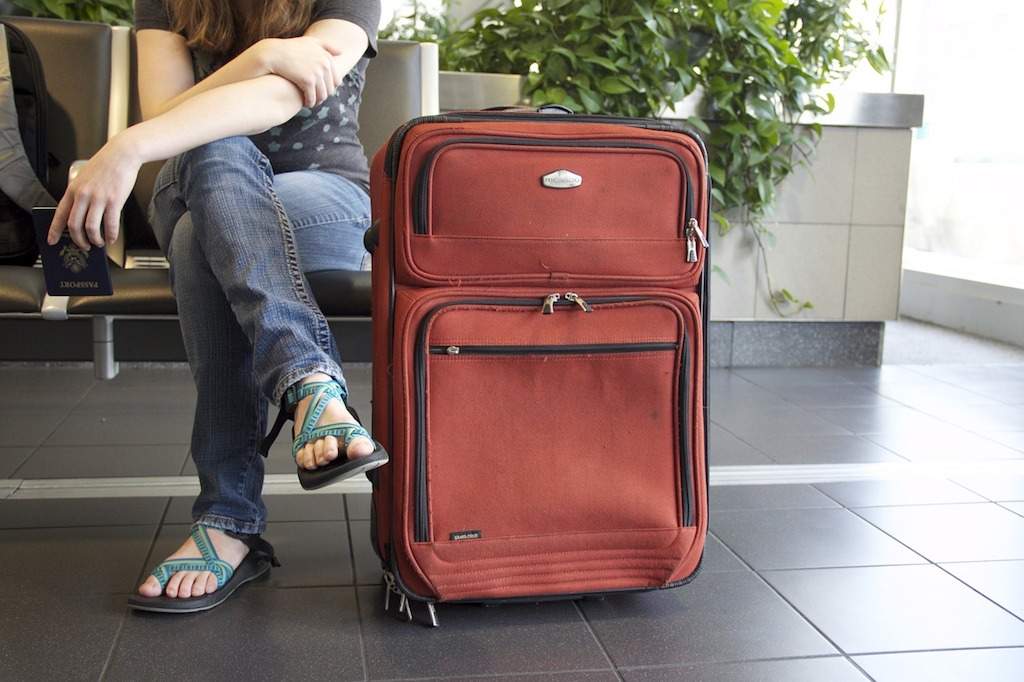Introduction
From the gentle stillness of the waves to the distant horizon that seems to demand an adventure, Daytona Beach holds a special charm. One thinks not only of the expanse of sun-drenched white sand or the nostalgia of the sea; It’s the promise of a one-of-a-kind experience – driving on the beach. It’s a vision of freedom, your car tires on hot sand, that’s an invitation to drive on Daytona Beach unlike any other.
A drive down memory lane
The Daytona sand tells whispers of automotive prowess and racing. Once a testing ground for four-wheeled pioneers, this beach has set records and become legendary. Here horsepower met sea spray, crowning Daytona as the birthplace of speed long before the famed Daytona International Speedway
An unparalleled Daytona experience
What really sets Daytona Beach apart is the legal license to sail on its designated beaches. It’s an experience that blends the fun of the freeway with the untold beauty of the beach. This is not just a move; it’s a journey along the very edge of the land, which means you’re at the point where land and sea meet.
In the following sections, we’ll delve into how you can embrace the storied Daytona Beach tradition. We’ll guide you through the preparations for the move, share the do’s and don’ts, and make sure you enjoy every moment, responsibly and happily. Welcome to the ultimate guide to Daytona beach driving, where every mile is a memory in the making.
Preparation of the vehicle
Before you put your wheels on the sandy shores of Daytona Beach, preparation is key. Understanding the rules of beach driving, maintaining your vehicle and having simple safety measures are all important steps towards a pleasant and safe driving experience
-
Understanding Daytona’s Beach Driving Laws
The independence of Daytona Beach comes with its own set of rules. This allows everyone to enjoy beach driving without compromising their safety and the environment.
- Rules and regulations: Beach driving is allowed from sunrise to sunset. However, access depends on coastal conditions and environmental obligations. Note that some areas may be closed to traffic during high tide or nesting season.
- Tide time matters: Tide time has a big impact on beach driving. The low tide spreads the hardened sand, making for a smooth ride. Always check the tide forecast before traveling.
- Traffic direction and speed limit issues: Traffic controls one lane, southbound on several coastal roads in Daytona. The maximum approach speed for humans and wildlife is 10 mph.
-
Preparation of the vehicle
Your car should be ready to go to the beach. Motorcycles and heavy vehicles are not allowed. Your vehicle, preferably a 4×4, should be equipped to handle the desert.
- Vehicle maintenance: Reduce tire pressure to about 20 psi to keep the tread up and prevent sand buildup. Always keep a tire pressure gauge and an air pump in your car.
- License or passport required: You must pay for daily beach access. If you frequently drive at the beach, consider an annual beach pass. Keep your license visible as you head to the beach.
-
Safety Measures
Before making the trip, safety should top your checklist. Be mindful of pedestrians and wildlife at all times.
- Safety Checklist: Keep your seatbelt fastened and headlights switched on during the journey. Abide by the designated traffic lanes and parking areas. Littering on the beach is strictly prohibited.
- Environmental Considerations: Beach driving should not come at the cost of the environment. Avoid driving near dunes and respect wildlife nesting areas. Remember, Daytona regulates beach driving to ensure the safety of its unique coastal ecosystem.
Once you’ve ticked off these preparatory steps, it’s time for the real adventure. In the next section, we’ll guide you on how to embark onto Daytona Beach for a drive that, like the tides, leaves an indelible mark.
Setting Out on the Beach
Once you have your permit, have prepped your vehicle, and understand the rules, it’s time to take the plunge. Get ready to set out on the sandy expanses of Daytona Beach.
-
Entering the Beach
Entering the beach might seem straightforward, but there are a few key points to consider.
- Steps to Enter with a Vehicle: Use one of the designated vehicular beach ramps. Approach the toll booth, present your beach pass, and follow the attendant’s instructions. Proceed slowly onto the sand and follow the designated driving lanes.
- Selecting Appropriate Entry Points: There are several beach access ramps along Daytona Beach. These include Granada Boulevard, Cardinal Drive, Harvard Drive, Williams Avenue, Seabreeze Boulevard, and many more. The choice largely depends on your location and the beach conditions on a given day.
- Coastal Condition Assessment
The coastline is a dynamic and ever-changing landscape. Understanding it can have a huge impact on your driving experience.
- Hard sand analysis: Whether you choose to drive on wet hard sand near the water’s edge or loose soft sand to the dunes depends on wave conditions and your understanding of how you car reacts to that water on.
- Understanding beach traffic: Beach traffic flows south on designated driving lanes, marked with signs and necks. Stick to these trails and watch for hikers and wildlife.
-
Navigating the land by road
Driving on the beach is very different from conventional roads, requiring special road techniques.
- Soft Sand Handling: If you slip or get stuck in soft sand, lower your tire pressure again for better traction. Keep your steering wheel steady and avoid sudden stops and acceleration to avoid digging in the sand.
- Obstacle Avoidance: Daytona beaches can present obstacles such as debris, wildlife, and tourists. Be aware of these potential obstacles and set them aside safely.
- To maintain traction and power: Put your car in a lower gear for more power and traction on the sand. Avoid sudden changes in speed to maintain speed, which is important when driving along the coast.
Ready or not, it’s time to embrace the experience of a sand-spattered, sun-drenched drive along Daytona Beach. Take it easy, and let’s explore the ethics that promise safe, respectful, and fun beach living.
Beach Driving Etiquette
Successfully driving on Daytona Beach is about more than preparation and navigation—it hinges on respect for others and for the environment. Here’s how to share the space responsibly and minimize environmental impact.
-
Sharing the Space
Daytona Beach is a shared space. Practicing courtesy ensures that everyone, drivers and pedestrians alike, can enjoy their beach experience.
- Understanding Shared Use with Pedestrians: Pedestrians frequent Daytona Beach as much as vehicles. Always yield to pedestrians, keep a safe distance, and leave a buffer zone between your vehicle and sunbathers, swimmers, and beachgoers.
- Right-of-Way Protocol: In a busy beach like Daytona, following the right-of-way protocol keeps traffic smooth and stops accidents. Always yield to vehicles coming out of beach ramps as they might not see you coming from their view.
-
Minimizing Environmental Impact
Protecting Daytona’s coastal ecosystem is every beach-goer’s responsibility. Always tread lightly and respect the environment.
- Driving Responsibly: Stick to the designated driving lanes and avoid fragile areas near the dunes. Drive slowly and cautiously to avoid disturbing wildlife or causing unnecessary erosion.
- Sticking to Designated Areas: Some areas of Daytona Beach are off-limits to vehicles for environmental reasons. These areas may include bird nesting spots or turtle habitats. Respect these restrictions and stick to the designated driving area.
By showing respect for fellow beach-goers and the environment, you can ensure that the privilege of driving on Daytona Beach remains for future generations to enjoy. A safe and respectful drive is always a memorable one. Happy beach driving!
making the most of your experience
Driving in Daytona Beach is just the beginning. There are plenty of opportunities to stop, explore and participate in recreational activities.
-
Leisure activities
Daytona Beach offers fun for the whole family. Here are some suggestions to enhance your beach experience.
- Activities around the beach area: Enjoy swimming in the warm waters, a game of beach volleyball, or sunbathing. You can also consider renting a bike or kayak for a different perspective.
- Places worth stopping and exploring: The Daytona Beach Bandshell near the beach often hosts concerts and events. Another beach landmark, the Daytona Beach Boardwalk features plenty of fine dining, street fairs and shops.
-
Local resources
Daytona Beach’s many amenities help make your beach visit more relaxing.
- Toilets: Many toilets are conveniently located on the beach.
- Food Vendors: Various vendors will offer refreshing drinks, snacks and food throughout the day.
-
To make it last longer
Daytona Beach does not allow overnight camping. However, there are options for those who want to stay longer.
- Parking near the beach: There are various parking facilities on and around the beach as the beach is easily accessible.
- Nearby Campgrounds: You’ll find plenty of campgrounds nearby, such as Daytona Beach Campground and Nova Campground, where you can spend the night
Getting the most out of a trip to Daytona Beach requires looking beyond the mode of driving. Take a break from the wheel and explore all that this lovely place has to offer.
Quick maintenance
While driving in Daytona Beach is an enjoyable experience, it’s important to be prepared for any unforeseen circumstances.
-
A common pitfall is how to avoid it
Accidents can happen. Here’s how to stay on the safe side:
- On entry: Reduce tire pressure to increase traction and attempt to decelerate to neutralize the vehicle. If this fails, use a pull rope or call for help.
- Emergency Contacts: Always keep a Daytona Beach Patrol contact number on your phone. In an emergency, call 911 or head to the nearest rescue station.
-
First Aid and Safety Prep
Well-prepared first aid and knowledge of emergency procedures is essential.
- Basic first aid: Your kit should include bandages, disinfectant wipes, sunscreen, aloe vera gel and sting relief spray.
- How to call for help: For immediate assistance, call 911. If emergency care is needed, direct nearby motorists or beachgoers. Lifeguard services can also help in an emergency.
conclusion
Driving along the beach in Daytona is an unforgettable experience that has a mix of adventure and relaxation.
- Daytona has miles of driving beaches, so follow the guides’ advice to make the most of your trip.
- Remember to drive cautiously, respect the environment and share the beach with other beachgoers.
- Keep Daytona’s heritage and natural beauty in mind. Strive for an enjoyable experience that will keep the pristine atmosphere of this unique setting for years to come.
When you explore Daytona Beach with your own car, you open up a wonderland of beaches. Embrace this rare opportunity, and let your beach driving trip create lasting memories, all while positively contributing to the preservation of this precious place.









